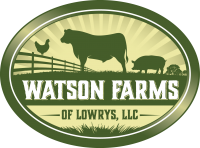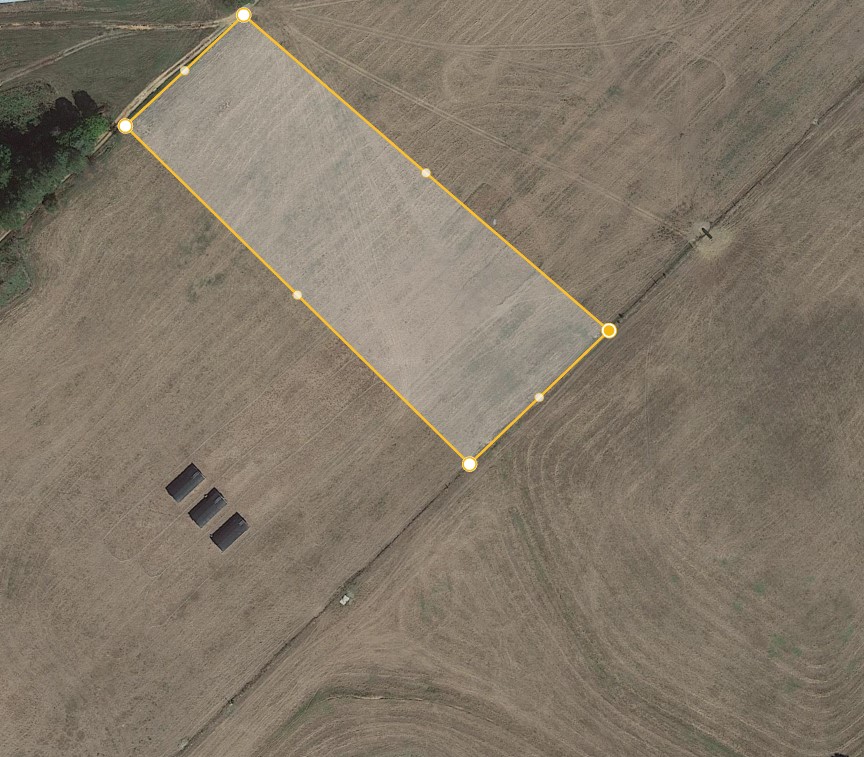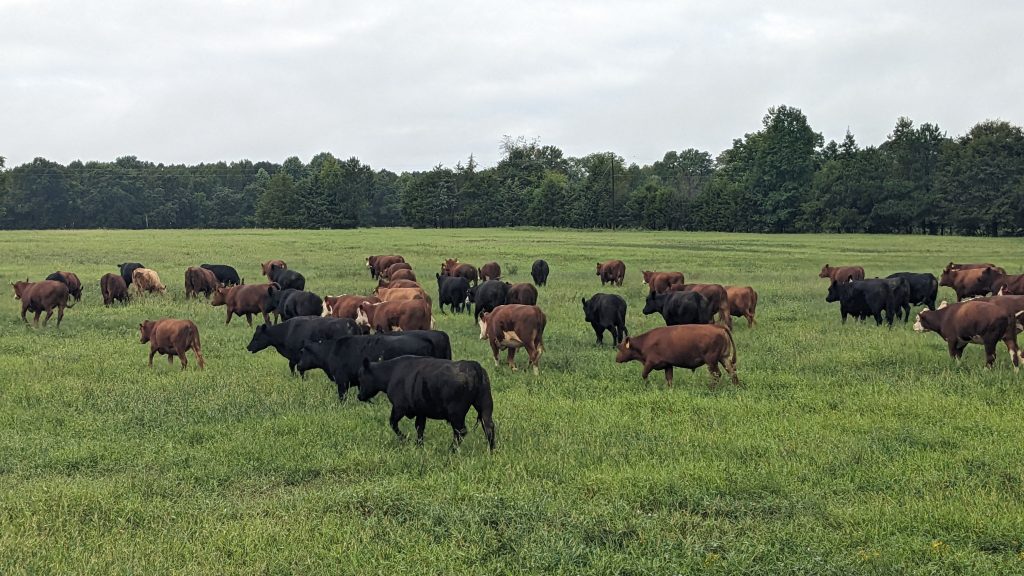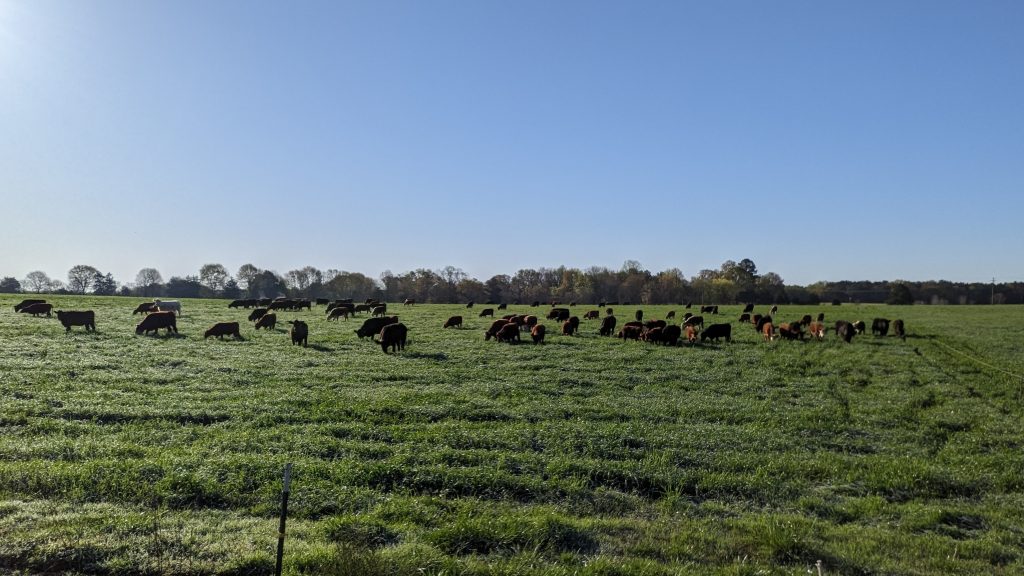This is a fun blog series where we show you exactly the paddock that our animals are enjoying on a particular day. All of our animals are raised in their natural environment and the common denominator among them all is PASTURE ROTATION! So take a look through these blog posts to see where the animals find themselves on a given day.
Before this past Sunday, our farm had seen almost no measurable rainfall for about a month. Thankfully we received a good rain Sunday evening which has prevented a lot of our grass from dying.
Our flexible-paddock grazing system plays a critical role in maintaining our cattle herd performance and pasture recovery during these dry spells. Instead of concentrating the herd on a small paddock where they would perform more disturbance, these fragile times call for a larger paddock.
This does two critical things:
- It saves grass by allowing the cattle to spread out thereby trampling less of the valuable forage.
- It allows the cattle to maintain their rate of gain through their selection of only the best portion (the top third) of the grass plant. We allow them to “top” the paddock then we move them on the next day. This also is better for the grass as it can recover more quickly than if it was grazed lower.
A flexible paddock grazing system is the only thing that has kept us from having to feed hay in a dry spell like this. We’re thankful that we finally got a good rainfall event, and will be carefully managing our herd until the next one.
- Size: 13.15 acres
- Number of cattle: 140
- Class of livestock: feeder cattle
- Type of grasses: crabgrass, foxtail, Johnson grass, other native summer grasses and forbs
- Grazing duration: 24 hours
















